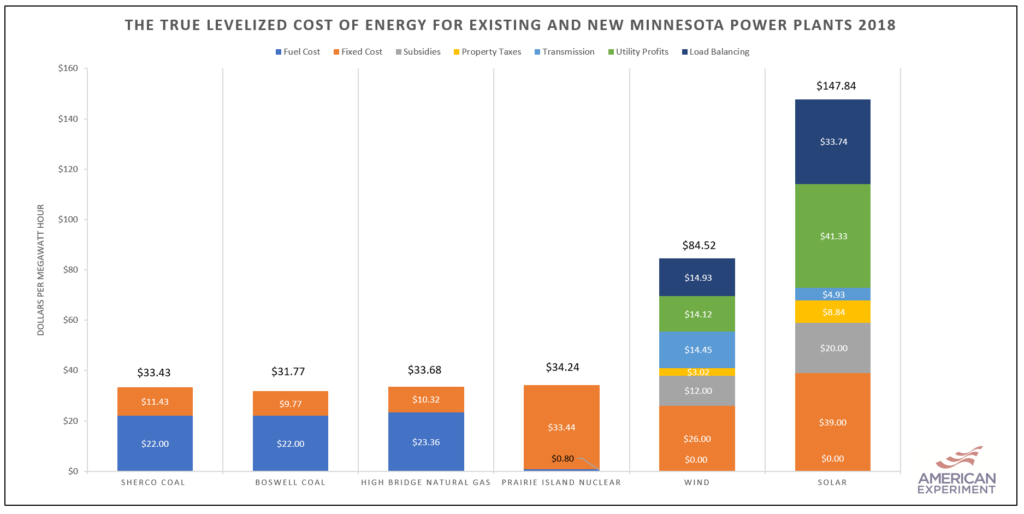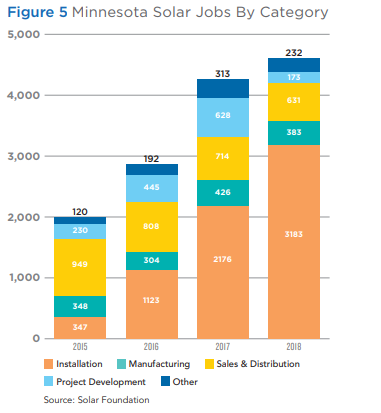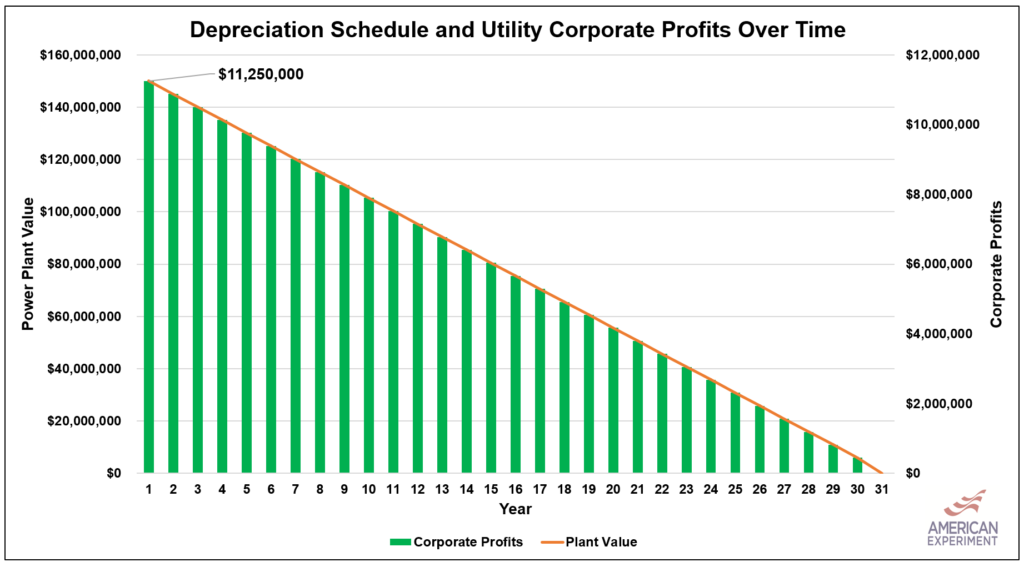Minnesota Center For Energy and Environment thinks governments “have room” to raise taxes in communities losing coal plants
Energy policy in Minnesota is a mess.
Liberal politicians, profit-seeking, government-approved monopoly utilities like Xcel Energy, and environmental groups are pushing for the closure of Minnesota’s reliable coal-fired power plants, which produce some of the most affordable electricity in the state, decades before the end of their useful lifetimes. Their “solution,” is to replace the coal plants with unreliable sources of electricity, like wind and solar power.
Losing Minnesota’s existing coal plants is bad for the entire state because our economy needs affordable energy to compete with companies abroad. But the loss of coal-fired power plants is felt even more in the communities where the plants are located because they are a major source of high-paying, family supporting jobs, and they are also a huge part of the tax base, providing funding for schools, extracurricular programs, and other government services.
There is no question about it, the loss of a coal plant means a reduced quality of life for the communities where they operate. However, one environmental group, the Minnesota Center for Energy and Environment (MNCEE), seems to think that these local communities can raise taxes to help fill the void left by the retiring plants.
Insult to Injury
Audrey Partridge, the regulatory policy manager at MNCEE, told MinnPost:
“Many of these communities are probably not taxing their residents or businesses quite as high as other communities of their size, so they have some room to raise revenue,” she told MinnPost.”
The MinnPost article goes on to talk about the Boswell Energy Center, which was featured in our spring 2020 issue of Thinking Minnesota. Boswell is the backbone of the Iron Range economy. Located in Cohasset, Boswell provides nearly 70 percent of the city’s tax revenue and about 20 percent of the school district’s take, Minnesota Power told MinnPost. The Mayor of Cohasset, Greg Hagy, said that revenue stream was crucial in the recent construction of a senior center and in the renovation of a day care center.
Boswell also employs 171 people in high-paying jobs. These jobs, and the wages that come along with them, disappear if Boswell closes. This means nearly two hundred employees would potentially be looking to relocate or find new jobs to make ends meet in a town of 2,700 people. Asking a city of 2,700 that just lost 171 of the best-paying jobs in town to pay more in property taxes shows how little people in the Twin Cities metro understand about life on the Iron Range.
The Domino Effect
As we emphasized in our piece on Boswell, the coal plant is the heart of the Iron Range, pumping the all-important electricity needed to keep the region’s iron mines and paper mills afloat. These industries employ thousands of Minnesotans and also provide significant revenue for local governments and schools. If Boswell, which produced the most affordable electricity in Minnesota in 2018, is closed, the energy resource that replace it will be more expensive, and likely less reliable.

The high reliability and low cost of the Boswell plant are likely why Minnesota Power appears interested in running the plant for the foreseeable future.
Sherburne County (Sherco)
Unlike Minnesota Power, which appears to see the value in its coal-fired power plant, Xcel Energy wants to retire their coal plants as quickly as possible, even though their coal plants could produce reliable, affordable electricity for decades to come. While Xcel claims their motives are environmental, the reductions in CO2 emissions from retiring their coal plant will be immeasurably small in a global context. The closure of their coal plants, however, will have a very measurable negative impact on the City of Becker.
According to MinnPost, the Sherco plant provides 75 percent of the City’s tax base and it also employs 301 people at wages of $88,000, according to an MNCEE study. Xcel claims jobs will be needed at a solar facility the company wants to build, but according to the Solar Foundation, the vast majority of jobs in the solar industry are temporary jobs in installation and manufacturing. After the project is installed, the jobs dry up.

Not only will jobs dry up, but property taxes will, too. According to DSIRE, solar panels in Minnesota are exempt from paying traditional property taxes:
“In lieu of a property tax on large solar energy generating systems, a production tax is set beginning with taxes payable in 2015. The production tax for electricity generated by solar is $1.20 per megawatt-hour (MWh) for systems exceeding 1 MW (AC); systems 1 MW (AC) or less are exempt from the production tax. The solar energy production tax is considered to be a personal property tax.”
The problem with a property tax based on electricity production from solar panels, is that solar panels aren’t very productive.
In Minnesota, solar panels only produced about 18.2 percent of their potential in 2018. In fact, all of the solar panels in Minnesota generated 1.042 million megawatt hours of electricity that year. This brings the tax contribution of these panels to about $1.25 million for the entire state of Minnesota.
In contrast, if we look at the total expenditures of nearly $4 million for the City of Becker’s budget and consider the fact that 75 percent of the City’s tax base comes from the plant, we can determine that the total contribution of the plant is nearly $3 million to just the City of Becker, to say nothing of the taxes paid to Sherburne County.
Why the Difference In Minnesota’s Major Utilities?
Whereas Minnesota Power appears interested in continuing to run the Boswell Energy Center for the foreseeable future, Xcel Energy is eager to shut down their coal plants as soon as possible. This is likely due to the customer bases each of these utilities serves.
Minnesota Power sells the vast majority of its electricity to iron mines and paper mills, which compete in a global marketplace. If electricity prices get too expensive for these industries, they simply close up shop for good, which would be the worst case scenario for Minnesota Power.
Xcel, on the other hand, serves mostly residential customers who have higher incomes than those living Up North. Because Minnesota state law does not allow these customers to shop around for a more affordable provider, Xcel is able to raise the cost of electricity on them with no consequences.
The problem with monopoly utilities is that they have bad incentives. Minnesota state law says they cannot sell their electricity for a profit. Instead, government-approved monopoly utilities operate under a business plan called “cost of service” regulation. Under this plan, the company is allowed to charge enough for their electricity to cover the cost of providing the service, plus a profit, or rate of return, on the power plants they build. But the amount of profit they make declines over time as the power plant depreciates, as you can see in the picture below.

This gives Xcel Energy a powerful incentive to close down old coal plants, like the Sherburne County units, that produce affordable electricity and replace them with expensive and unreliable sources like wind and solar. The fact that wind and solar are unreliable is actually a bonus in this case, because it means that Xcel will also need a reliable source of power to “back up” these energy sources when the weather isn’t cooperating. Xcel has proposed to build natural gas plants to fill this void, for a profit.
Conclusion
Minnesota communities will suffer greatly if they lose the reliable, affordable coal plants that provide a large source of revenue and jobs for the region. It would be one thing if these power plants were being replaced by a more economically competitive source of energy, but they aren’t. The are being replaced by an expensive combination of wind, solar, and natural gas that will add insult to injury by increasing electricity prices for all Minnesotans as well as destroying the local tax base and hundreds of good-paying jobs.